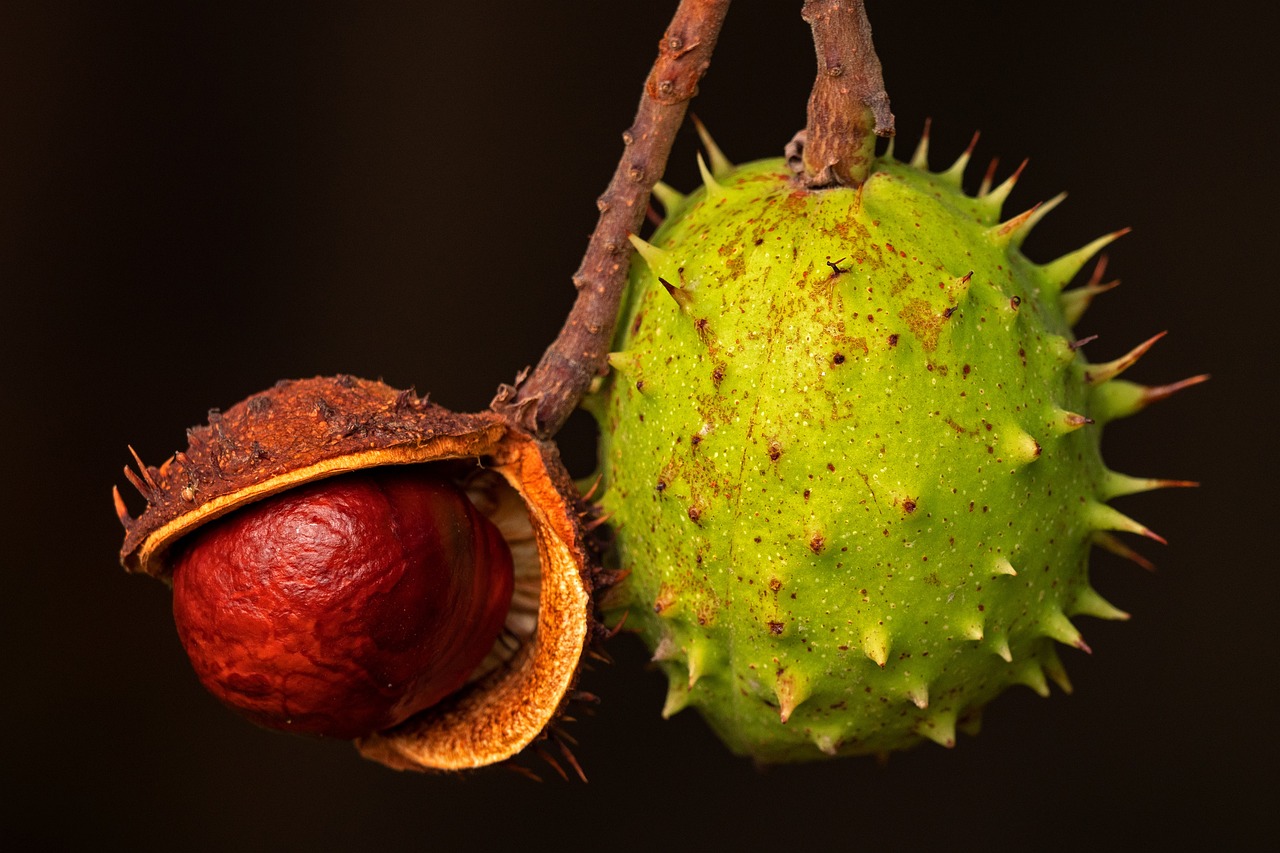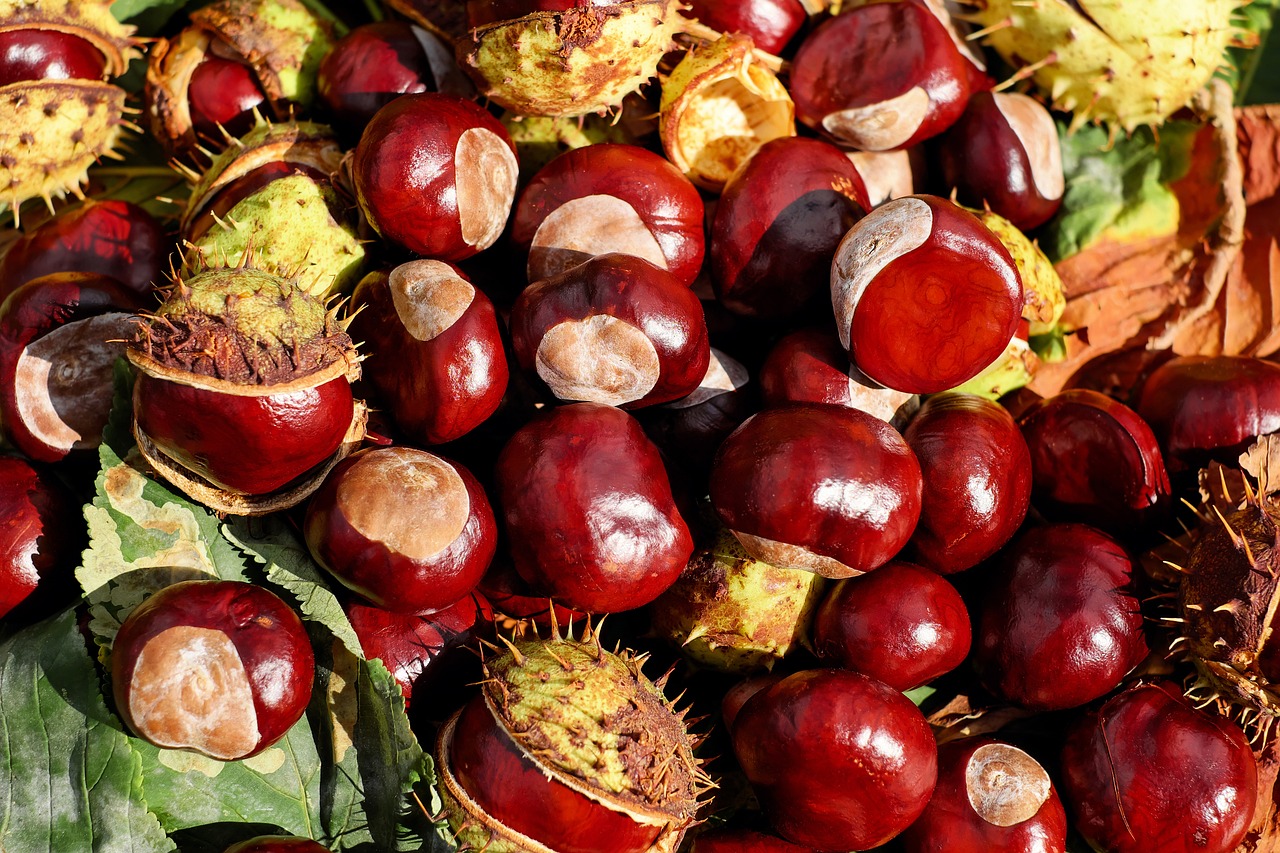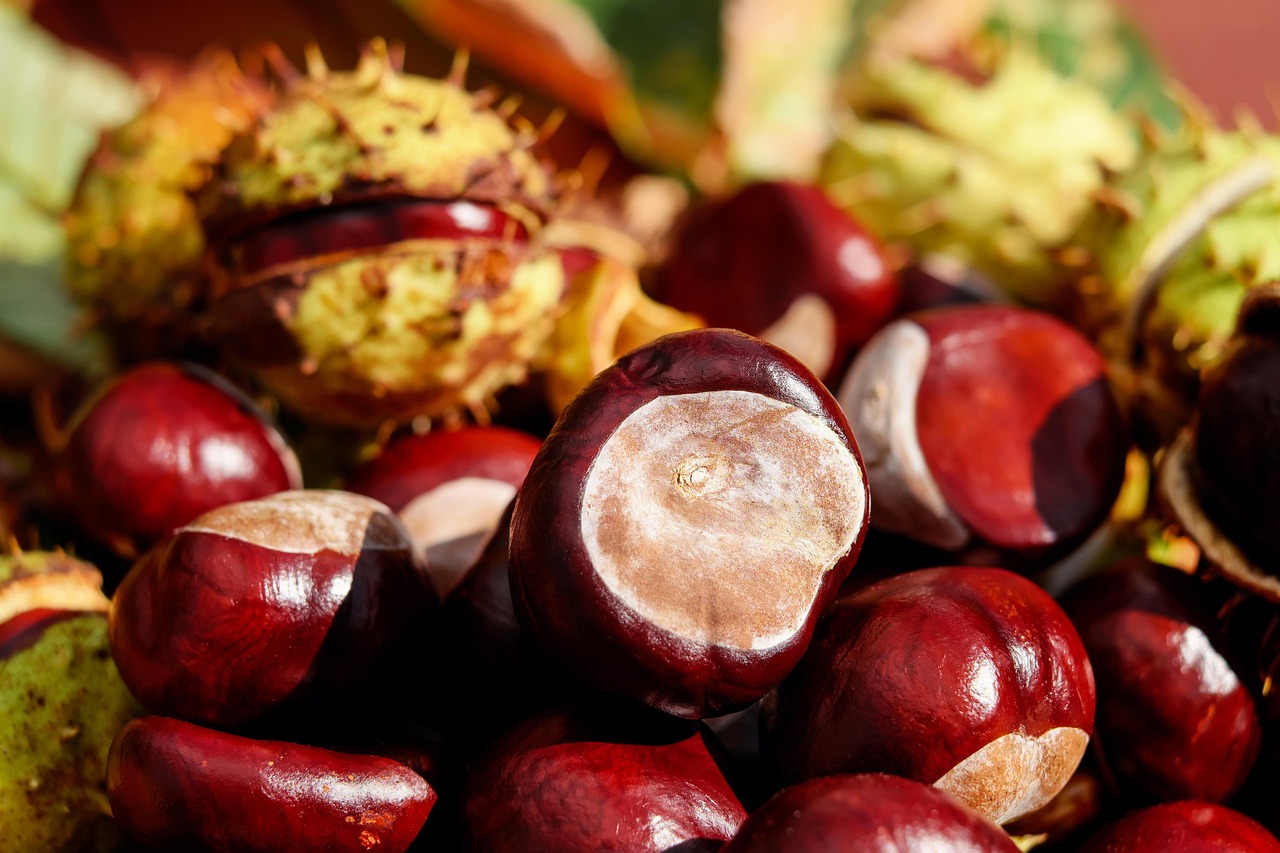The American Chestnut tree, once a dominant species in eastern U.S. forests, faced a catastrophic decline due to a fungal blight introduced in the early 1900s. This led to the near extinction of the species. Efforts to restore the American Chestnut involve breeding blight-resistant trees and reforestation initiatives.
Introduction

The American Chestnut tree (Castanea dentata) was once a cornerstone of the eastern North American forest ecosystem. Towering up to 100 feet, these magnificent trees were known for their rapid growth, valuable timber, and nutritious nuts. They played a crucial role in the livelihoods of both wildlife and humans. However, the introduction of the chestnut blight, caused by the fungus Cryphonectria parasitica, drastically changed this landscape.
In the late 19th and early 20th centuries, the blight spread rapidly across the range of the American Chestnut. By the 1940s, it had wiped out nearly all mature trees. The tree’s decline not only affected the natural environment but also had significant economic repercussions. Communities that relied on chestnut wood for construction and its nuts for food faced considerable challenges.
Understanding the history of this decline is essential for conservation efforts today. Research into the American Chestnut has intensified in recent decades, focusing on genetic resistance to the blight and methods for restoring this iconic species to its former glory. Innovative approaches include breeding programs that cross American Chestnut with blight-resistant species, as well as genetic engineering techniques.
The Impact of Chestnut Blight
The chestnut blight’s introduction marked one of the most significant ecological disasters in North America. The rapid spread of the disease resulted in a loss of biodiversity, altering habitats and food sources for numerous species. The following table outlines key events in the decline of the American Chestnut:
| Year | Event |
|---|---|
| 1904 | Chestnut blight first observed in New York City. |
| 1910s | Disease spreads rapidly through northeastern forests. |
| 1940s | Nearly all mature American Chestnuts are killed by the blight. |
| 2000s | Research begins on genetic resistance and restoration efforts. |
The devastation of the American Chestnut did not only impact ecological systems but also cultural practices. The tree’s wood was prized for its durability and resistance to decay, making it a popular choice for furniture and building materials. Furthermore, its nuts were a vital food source for wildlife and were historically harvested by people as well.
Efforts for Restoration
In recent years, there has been a resurgence of interest in restoring the American Chestnut tree. Various organizations and researchers are undertaking efforts to bring back this species to its native environment. Some key strategies include:
- Breeding Programs: Crossbreeding American Chestnuts with Chinese Chestnuts, which are resistant to blight.
- Genetic Engineering: Developing genetically modified trees that incorporate blight resistance without losing desirable traits.
- Community Involvement: Engaging local communities in reforestation projects to raise awareness and support for chestnut restoration.
These collaborative efforts not only aim to reintroduce the American Chestnut into forests but also strive to restore ecological balance and promote biodiversity in affected regions. As these initiatives progress, they provide hope for the future of this once-magnificent tree species.
Research and Development Initiatives
Efforts to restore the American Chestnut tree involve extensive research and development initiatives. Scientists and conservationists are collaborating on various fronts to understand the blight and develop effective solutions. This section explores some of the most notable research projects and their findings.
Understanding Chestnut Blight
To combat chestnut blight effectively, researchers have focused on understanding the biology of the fungus Cryphonectria parasitica. This includes studying its life cycle, infection process, and genetic makeup. Knowledge gained from these studies is crucial for developing resistant trees.
Some key research areas include:
- Fungal Biology: Examining how the blight infects American Chestnuts and understanding its virulence factors.
- Resistance Mechanisms: Identifying natural resistance traits in other chestnut species that could be incorporated into American Chestnuts.
- Environmental Factors: Investigating how climate, soil conditions, and other ecological variables influence the spread and impact of the blight.
Breeding Programs in Detail
The breeding programs aimed at restoring the American Chestnut are multifaceted. These programs seek to combine the desirable traits of the American Chestnut with the blight resistance of related species. The primary focus is on:
- Hybridization: Crossing American Chestnuts with Chinese and Japanese Chestnuts to create hybrids that exhibit both resilience and growth characteristics.
- Backcrossing: Repeatedly breeding hybrids back with American Chestnuts to enhance traits while retaining desirable qualities specific to the American species.
- Field Trials: Planting hybrid seedlings in various environments to assess growth rates, survival, and resistance to blight.
These breeding efforts have shown promising results. Early generations of hybrid trees have demonstrated improved resistance to the blight while maintaining the vital characteristics of American Chestnuts.
Genetic Engineering Approaches
Alongside traditional breeding methods, genetic engineering presents another avenue for restoring the American Chestnut. Researchers are exploring advanced biotechnological techniques to enhance disease resistance more rapidly. This section discusses the techniques used in genetic engineering.
Key Genetic Engineering Techniques
The following techniques are being utilized to develop blight-resistant American Chestnut trees:
- Gene Editing: Using CRISPR technology to specifically edit genes responsible for susceptibility to chestnut blight. This method allows for precise modifications without introducing foreign DNA.
- Transgenic Approaches: Introducing genes from other species known for their resistance to fungal pathogens, such as wheat, into the American Chestnut genome.
- Molecular Markers: Identifying markers linked to resistance traits that can facilitate selective breeding and speed up the breeding process.
The use of genetic engineering is not without controversy, as public opinion varies on the safety and ethics of genetically modified organisms (GMOs). Nevertheless, researchers aim to ensure transparency and engage with communities to build trust in these innovative solutions.
The Role of Community Engagement
Community involvement plays a crucial role in the restoration efforts of the American Chestnut. Engaging local populations fosters awareness and encourages participation in conservation activities. Here are some ways communities are getting involved:
- Education Programs: Workshops and seminars educate the public about the importance of the American Chestnut and ongoing restoration efforts.
- Volunteer Planting Events: Organizing events where community members can participate in planting hybrid seedlings in local forests.
- Citizen Science Projects: Encouraging individuals to monitor trees for signs of blight or other health issues, contributing valuable data to researchers.
This collaborative approach not only aids scientific research but also strengthens community ties and fosters a sense of ownership over local natural resources. As more individuals become involved, the collective impact can significantly enhance restoration efforts across affected regions.

Challenges Facing Restoration Efforts

While the restoration of the American Chestnut is a promising endeavor, several challenges must be addressed to ensure the success of these efforts. Understanding these obstacles can help researchers and communities devise effective strategies to overcome them.
Environmental Factors
The ecological landscape in which efforts to restore the American Chestnut take place is constantly changing. Various environmental factors can impact the survival of newly planted trees. Key challenges include:
- Climate Change: Shifts in temperature and precipitation patterns can affect the growth and health of American Chestnut trees, making them more susceptible to disease and pests.
- Soil Conditions: The quality of the soil, including nutrient availability and pH levels, plays a vital role in the successful establishment of seedlings. Poor soil conditions can hinder tree growth.
- Competition with Other Species: Invasive plant species may outcompete American Chestnuts for resources like light, water, and nutrients, further complicating restoration efforts.
Researchers are continuously monitoring these environmental changes and adapting their strategies to mitigate their impacts on restoration initiatives.
Genetic Diversity Concerns
Another critical aspect of restoration is maintaining genetic diversity within the American Chestnut population. A lack of genetic variability can lead to vulnerabilities, making the species more susceptible to diseases and environmental stressors. Addressing this concern involves:
- Maintaining a Diverse Gene Pool: Breeding programs aim to incorporate a wide range of genetic material from surviving American Chestnut populations and related species to enhance resilience.
- Monitoring Genetic Health: Regular assessments of the genetic diversity within restored populations help ensure that they are robust enough to thrive in changing conditions.
- Collaborative Breeding Efforts: Partnering with various institutions allows for a broader exchange of genetic material, increasing the chances of developing resilient hybrids.
Case Studies of Successful Restoration
Examining successful restoration case studies can provide valuable insights into effective practices and strategies. Several projects across North America have achieved notable successes in reintroducing American Chestnuts into their natural habitats.
The American Chestnut Foundation (TACF)
The American Chestnut Foundation has been at the forefront of restoration efforts. Their approach includes a comprehensive breeding program aimed at producing blight-resistant trees through careful hybridization. Notable achievements include:
- Development of Blight-Resistant Hybrids: TACF has successfully produced multiple generations of hybrids that demonstrate both resistance to blight and characteristics reminiscent of the original American Chestnut.
- Field Trials: Extensive testing in different environments has provided valuable data on how these hybrids perform under various conditions.
- Community Engagement: TACF’s outreach programs have mobilized thousands of volunteers to participate in planting initiatives, strengthening community ties to conservation efforts.
Collaboration with Universities and Research Institutions
Universities play a critical role in advancing restoration science through research partnerships. One example is the collaboration between universities and TACF to study tree genetics and propagation techniques. Key contributions include:
- Research on Genetic Engineering: Academic institutions are exploring cutting-edge techniques such as CRISPR to develop more effective blight-resistant strains.
- Long-term Ecological Studies: Universities conduct studies examining the long-term impacts of reintroduced chestnuts on forest ecosystems, providing essential data for future restoration efforts.
- Student Involvement: Engaging students in research projects fosters a new generation of scientists committed to conservation and restoration.
The collaboration between organizations, universities, and local communities serves as a model for successful restoration practices, combining scientific rigor with grassroots involvement.
The Future of the American Chestnut
The future of the American Chestnut tree depends on continuous research, community engagement, and adaptive management strategies. As restoration efforts evolve, monitoring progress and making necessary adjustments will be crucial for achieving long-term success.
Innovations in genetic engineering, combined with traditional breeding methods and community support, offer hope that this iconic tree species can once again thrive in its native ecosystems. The ongoing commitment from researchers, conservationists, and local communities will be essential in turning this vision into reality.
Challenges and Opportunities Ahead

As restoration efforts for the American Chestnut continue, it is essential to remain aware of both the challenges that lie ahead and the opportunities that arise from ongoing research and community involvement. One significant challenge is the potential for new pests and diseases to emerge, which could threaten not only the American Chestnut but other tree species as well.
Adaptability will be crucial in this evolving landscape. Researchers are working to develop trees that can withstand not only the current threats posed by chestnut blight but also other unforeseen challenges. This adaptability can be achieved through:
- Integrated Pest Management: Employing strategies that combine biological control, habitat manipulation, and the use of resistant varieties to manage pests sustainably.
- Monitoring Ecosystem Health: Implementing comprehensive monitoring programs to assess the health of forests and detect early signs of disease or pest outbreaks.
- Collaborative Research Networks: Building partnerships among researchers, conservationists, and policymakers to share knowledge and resources effectively.
Furthermore, as climate change continues to alter ecosystems, understanding how these changes affect American Chestnut populations will be vital. Scientists are exploring how different climate scenarios could impact growth patterns and disease susceptibility. By preparing for various future conditions, restoration projects can be more resilient and effective.
The Role of Education and Outreach
Education and outreach are fundamental components of successful restoration efforts. Engaging with communities, schools, and local organizations not only raises awareness about the American Chestnut but also fosters a culture of conservation. Educational initiatives can include:
- Workshops and Seminars: Providing information on the ecological importance of the American Chestnut and how individuals can contribute to restoration efforts.
- School Programs: Integrating environmental science curricula that focus on the history and significance of the American Chestnut into local educational systems.
- Social Media Campaigns: Utilizing online platforms to share success stories, educate the public, and promote upcoming events related to chestnut restoration.
Through these educational initiatives, communities can develop a deeper understanding of their role in conservation. When individuals feel connected to their environment, they are more likely to invest time and effort into restoration projects.
Final Thoughts
The journey towards restoring the American Chestnut tree is a testament to human perseverance and collaboration in the face of ecological challenges. From its near extinction due to chestnut blight to the innovative breeding and genetic engineering efforts underway today, the story of the American Chestnut is one of hope and resilience.
As we move forward, it is essential to harness the collective knowledge of researchers, conservationists, and local communities. By fostering collaboration and utilizing advanced technologies alongside traditional methods, we can create a sustainable future for this iconic species. The ultimate goal is not only to reintroduce the American Chestnut into its native ecosystems but also to ensure that it thrives alongside other forest inhabitants.
The commitment to restoring the American Chestnut represents a broader commitment to biodiversity and ecological health. It serves as a reminder that active engagement in conservation can yield positive outcomes for both our environment and future generations. As we continue this vital work, we should remain vigilant, adaptable, and hopeful for a thriving population of American Chestnuts in our forests once more.
